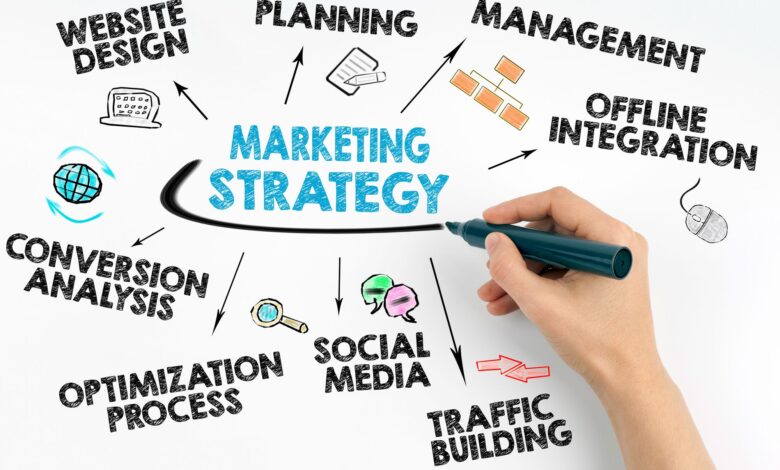Successful advertising campaign strategies

Successful advertising campaign strategies
Define Advertising Campaigns
An advertising campaign is a coordinated series of advertisements focused on a particular product, service, or message. The goal is to promote brand awareness, engagement, and sales through consistent, repetitive exposure across various media channels.
There are several common types of advertising campaigns:
- Product launch campaign – Introduces a new product to the market
- Brand awareness campaign – Builds knowledge of brand identity and offerings
- Lead generation campaign – Drives inquiries, downloads, signups, etc.
- Direct response campaign – Prompts immediate action like sales/conversions
Effective campaigns are comprised of different media formats:
- TV commercials
- Radio spots
- Print ads (magazine, newspaper, billboard)
- Digital ads (search, display, video, social)
- Website and landing pages
Some examples of memorable and successful advertising campaigns include:
- Nike’s “Just Do It” – Simple, inspiring slogan that energized the brand
- De Beers “A Diamond is Forever” – Positioned diamonds as timeless symbols of love and commitment
- Apple’s “1984” Super Bowl ad – Iconic ad that heralded their spirit of rebellion and innovation
- Dos Equis “Most Interesting Man in the World” – Used humor and memorable character to promote their beer
- GE “Ecomagination” – Focused on environmental innovations and re-energized their brand image
- Got Milk? – Simple, effective campaign that drove awareness of milk benefits and sales
Set Clear Campaign Goals
Defining clear goals is one of the most important parts of developing a successful advertising campaign. Without properly-defined goals, it’s impossible to measure the performance and ROI of a campaign. Campaign goals also guide all the strategic decisions throughout the process, from messaging to media placement.
There are a few key types of campaign goals to consider:
- Awareness Goals – These goals focus on metrics like reach and impressions to increase brand awareness and visibility. Common awareness goals include getting your message in front of a certain number of unique users or generating a specific number of impressions.
- Engagement Goals – Engagement goals look at actions people take, like clicks, form submissions, content shares, etc. These demonstrate that your message resonated enough for people to engage further.
- Conversion Goals – The most direct goals are conversion goals, where users take a specifically desired action like purchasing a product, signing up for a service, registering for an event, etc. Defining campaign conversion goals is crucial.
- Brand Lift Goals – These goals measure how your campaign affects brand metrics like favorability, consideration, recall, etc. Brand lift shows how you are positively positioning the brand itself through advertising.
Strong campaign goals follow the S.M.A.R.T. model:
- Specific – Goals should address a specific metric like impressions, clicks, or conversions.
- Measurable – Choose quantifiable goals that can be tracked and analyzed.
- Achievable – Goals should be challenging but within realistic reach.
- Relevant – Goals must align closely with campaign objectives and desired outcomes.
- Time-bound – Goals should have a defined time period or deadline.
Well-defined campaign goals allow you to set strategy, allocate budget, select media, and measure success towards your specific objectives. Setting clear, S.M.A.R.T campaign goals is crucial for advertisement success.
Understand Your Target Audience
Before launching an advertising campaign, it is critical to research and understand your target audience. Who are you trying to reach with your campaign? What are their demographics, interests, values, and behaviors? Taking the time to gather insights into your audience will allow you to create more relevant, impactful messaging and media placements.
Conducting audience research should involve both quantitative and qualitative methods. Look at population statistics, poll your existing customers, read comments on social media, or hold focus groups to learn about your audience. Seek to understand their age ranges, income levels, geographic locations, family statuses, hobbies, pain points and more. The more insights you can gather, the better.
With a clear picture of your target audience, you can tailor your campaign to align with their needs and preferences. For example, an athletic apparel company launching a new line of running shoes would target their campaign toward young, active professionals who enjoy running and working out. Doing so allows them to showcase the shoes’ technical features in an aspirational way. A campaign targeted toward elderly customers would take a very different approach.
Always keep your core audience at the heart of your messaging, creative assets and media placements. Campaigns that resonate with a specific target audience perform much better than generic, one-size-fits-all campaigns. Defining and understanding your audience is one of the most important steps to develop an effective advertising strategy.
Create Strong Messaging
Creating strong, memorable messaging is crucial for any successful advertising campaign. Your messaging should clearly communicate your brand identity and promise to customers. It’s ultimately what makes your campaign stand out and stick in your target audience’s minds.
The importance of crafting a powerful central message or tagline cannot be overstated. This key message will be reinforced across all your campaign materials from videos to billboards to social media. Some tips for developing effective messaging include:
- Keep it simple and direct – Avoid overly clever or complex wordplay that could confuse. Stick to clean, benefit-driven messaging.
- Make it unique – You want your message to be distinctive enough to stand out from competitors. Include your brand name for recognition.
- Focus on emotional appeal – Connect with your audience on a personal, emotional level beyond just stating functional benefits.
- Tell a story – Use messaging that conjures up positive images and feelings that align with your brand purpose.
- Test different options – Develop multiple message possibilities and test them with your target audience for resonance.
Some classic examples of impactful and memorable advertising messages include:
- Nike’s “Just Do It” – Aspirational and motivating slogan.
- De Beers’ “A Diamond Is Forever” – Promises everlasting love and commitment.
- Apple’s “Think Different” – Aligns Apple with creativity and innovation.
- L’Oreal’s “Because You’re Worth It” – Reinforces self-esteem and empowerment.
- Wheaties “Breakfast of Champions” – Links the cereal with athletic prowess.
Crafting the right messaging provides a North Star for your entire campaign. Resonant slogans stick in consumer minds and help propel successful advertising efforts.
Select Relevant Media Channels
Determining the right media mix is crucial for reaching your target audience and campaign success. Consider both traditional channels like print, radio and TV as well as digital channels like search, social media and display ads. Evaluate reach, targeting capabilities, engagement potential, ad formats and costs for each channel.
Traditional Media
Print newspapers and magazines can effectively reach localized audiences. Placement near relevant content boosts engagement. Limitations include production lead times and lack of interaction. Television provides sight, sound and motion for engaging creative. National networks have broad reach while local stations allow geo-targeting. High cost for production and media buys. Radio offers strong targeting options with creative flexibility. Great for commuters and passive listening. Significant ad clutter can limit recall.
Digital Media
Search ads target users actively seeking information. Appear alongside organic results for seamless experience. Powerful tracking of conversions. Display and video ads on websites/apps reach engaged online users. Retargeting optimizes conversions. Social media platforms like Facebook and Instagram enable geo, demo and behavioral targeting. Interactive formats boost engagement. Mobile and streaming audio expand reach. Limitations include ad blocking technologies.
Omni-Channel Campaigns
The most effective campaigns use a cross-channel approach to reach audiences when and where they are most receptive. Awareness starts with TV, radio and print. Engagement continues on social, search and display. Retargeting across devices increases conversions. Omni-channel coordination also provides a seamless customer experience.
Develop Engaging Creative
Creative work is vital to the success of any advertising campaign. The right visuals, videos, and audio elements can capture attention and effectively communicate your brand message to your target audience.
When developing creative concepts, focus on visual storytelling that aligns with your campaign goals and resonates with your audience. Powerful images, interesting video content, and complementary audio all help viewers connect with your brand on an emotional level.
Some best practices for developing compelling creative include:
- Use high-quality visuals that reinforce your messaging through color, composition, and design. Original photography and cinematography lend an authentic feel.
- Keep videos concise and purposeful. Include only relevant content that supports your brand story. Videos under 2 minutes often perform best on social media.
- Leverage audio strategically. Background music sets the tone while voiceovers and sound effects maximize video impact.
- Convey a clear call-to-action. Creative should guide the viewer towards taking your desired action, whether visiting your website, making a purchase, or engaging with your brand.
- Establish brand consistency. Maintain the same style, imagery, and tone across campaigns to build recognition.
- Test creative concepts thoroughly. Get feedback from target demographics before launching to ensure messaging resonates.
With compelling, audience-focused creative, your campaign is more likely to breakthrough, engage your customers, and deliver results for your brand.
Set Realistic Budgets
The budget for an advertising campaign is a critical factor in determining what is possible. Marketers must set realistic budgets that align with campaign goals, resources, and expected ROI.
When setting a budget, it’s important to research costs associated with your strategies and tactics. Media buys, production, talent, and agency fees all impact budget needs. Allow for some flexibility, but avoid drastically underspending or overspending.
Look for ways to maximize impact within your budget constraints. Prioritize high-reach channels and placements that provide the most value. Negotiate better rates through partnerships and bundled deals. Repurpose creative assets when possible.
Effective budgeting requires knowledge of options and experience with cost structures. As an example, a campaign with a $50,000 budget could achieve broad reach through social media ads and some streaming audio, while a $500,000 budget could incorporate TV, radio, and out-of-home ads.
Aim to get the most mileage out of every dollar spent. Set benchmarks for cost per click, view, or conversion. Analyze performance to optimize spend. Low-budget campaigns can still make an impact through strategic planning and savvy media buys.
Execute Strategic Media Buys
The media buy is a crucial component of any advertising campaign. It determines where and when your ads will be placed to reach your target audience. Executing strategic media buys requires thoughtful planning and optimization to make the most of your advertising budget.
The importance of smart media planning and buying
Carefully planning and optimizing your media buys improves the efficiency and performance of your ad spending. Key factors to consider include:
- Identifying the best platforms and placements to reach your audience
- Analyzing historical performance data to guide future buys
- Setting frequency caps to avoid oversaturating users
- Optimizing towards conversion actions or KPIs, not just impressions
- Spreading your budget across multiple platforms and publishers
- Testing different platforms, placements and spend amounts
- Pacing your spending over time to maintain budget efficiency
How to optimize ad spending and placements
Media buyers have several levers to pull to optimize ad spends:
- A/B test different publishers, platforms and placements
- Adjust budgets and impression goals per platform
- Refine targeting to reduce waste and improve relevance
- Set dayparting to run ads during peak user times
- Implement frequency capping to limit over-exposure
- Use performance data to double down on high-converting placements
- Continue testing new platforms and publishers
Examples of strategic media buys
- Running YouTube bumper ads to reach a young, streaming audience
- Buying Facebook newsfeed ads to target users by interests and behaviors
- Programmatically purchasing display ads on niche websites frequented by your audience
- Investing in sponsored content on industry publications your customers read
- Promoting on search engines with tactical keyword buys aligned to products
- Placing audio ads on popular podcasts that your audience listens to
Executing your media buy strategically and optimizing based on performance can stretch your advertising dollars further. This allows you to make the most of your ad spend and reach your campaign goals.
Measure Results and Optimize
It’s critical to closely monitor and measure results during and after a campaign in order to determine effectiveness and optimize future efforts. Key performance indicators (KPIs) such as clickthrough rate, conversion rate, cost per acquisition, and return on ad spend should be tracked.
Campaign analytics provide insights into what’s working and what’s not. Look at metrics like impressions, clicks, conversions, demographics, timing, placement, frequency and more. See which creative and messaging resonates best with your audience. Identify high and low performing areas.
For example, you may find a certain ad copy generates more clicks and conversions compared to others. Or a display ad placement on a particular website substantially outperforms everywhere else. This data can inform future creative development and media buying.
Continually test different variables and make informed optimizations. Split test ad variations. Expand high converting placements. Refine target audiences. Double down on top performing channels. Reduce poor performers. This agile, data-driven approach allows you to continually refine and improve your campaigns over time.
The most effective advertising campaigns methodically measure performance across all stages. They derive actionable insights from the data which then informs an iterative process of optimization and improvement over time. This is how you develop campaigns that connect with audiences and fully align to business goals.
Summarize Effective Strategies
In summary, there are a number of key strategies that contribute to a successful advertising campaign. Here are some of the most essential takeaways:
- Set S.M.A.R.T. goals that align to business objectives and guide your campaign. Be specific on who you want to reach and what you want them to do.
- Research your target audience thoroughly so you can create messaging that resonates with them and compels action. Understand their demographics, psychographics, needs and motivations.
- Craft captivating messaging and creative that grabs attention and conveys benefits clearly. Test different concepts to optimize performance.
- Choose media channels that effectively reach your target audience, from traditional channels like TV and print to digital platforms like social media and search. Allocate budget across channels based on reach and conversion potential.
- Closely monitor and measure campaign results, then use insights to refine strategy and creative. Look beyond vanity metrics to business impact. Continuously optimize.
- Executing on these strategies requires cross-functional collaboration, analytical rigor, creativity and perseverance. But taking this strategic approach is key to achieving your campaign goals and driving real business value.
To recap, focus on your target audience, set S.M.A.R.T. goals, create compelling messaging, execute strategic media buys, measure ROI and optimize. By following these steps, you will be well on your way to advertising success.
READ MORE : TOP 5 WEBSITE CPA TO PROFIT MONEY ONLINE




